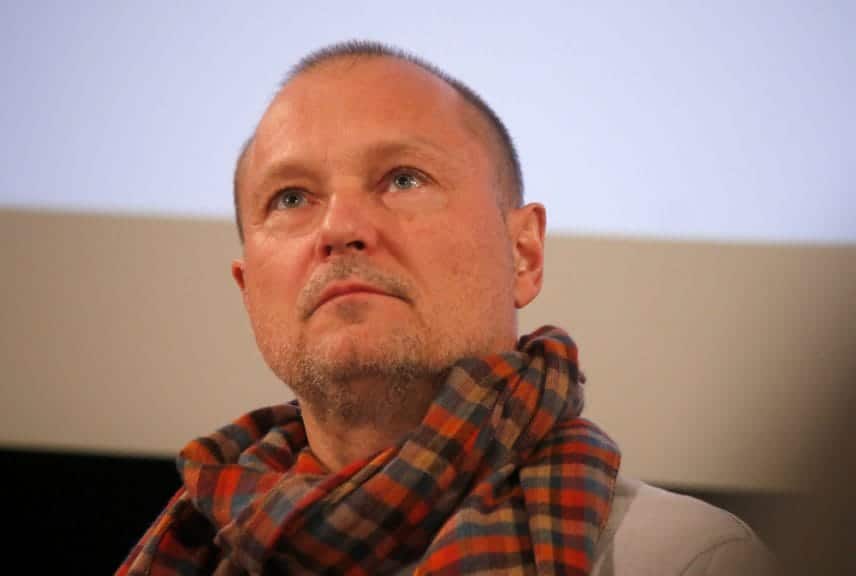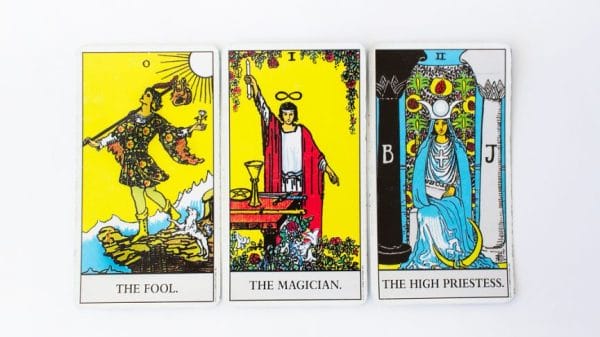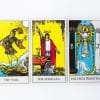The position Juergen Teller occupies in the zeitgeist is one enlivened by paradox. If you have any interest in fashion as you endlessly scroll down your Twitter feed or TikTok FYP, you would be hard-pressed not to find some form of commentary on Juegren Teller’s work, usually quite negative.
Like the ironic memes that, on the surface, criticize his work but arguably undertake the necessary steps to better engage with these seemingly normal images, Teller’s fashion photography is at its core ironic, using a veneer of sheer superficiality to hide a rich yet incredibly uncomfortable interior. Teller straddles the supposedly impenetrable barrier separating the art and fashion worlds.
In Teller’s world, high art and commercial fashion are the same. Each offers commentary about the other in the expanding world of Capitalism.
Who is Juergen Teller?
Teller is a contemporary German fine arts photographer infamous for subverting ostentatious displays of glamour inherent to fashion photography. Provocative and unsettling, Teller’s photography takes a steadfast approach to capturing a lived reality filled with enthusiasm, desire, and complexity. Since the 1990s, his work has been widely sought after. Some of the biggest Fashion houses in the world have commissioned him to shoot ad campaigns. And, there have been numerous exhibitions showcasing his work in galleries and museums worldwide.
What’s the Importance?
Amongst Gen-Z, Teller rose in notoriety due to his editorial for W Magazine’s 2021 Best Performances Issue. The Best Performances Issue is an annual celebratory portfolio highlighting the standout acting performances of each year. The publication will collaborate with a photographer to shoot a series of photographs of those showcased.
For the 2021 issue, W partnered with Teller to photograph the editorial. And, well the result sparked a mixture of outrage and confusion on social media. Because the images looked so unpolished, Teller, and to some extent, W, faced criticism for pulling one over on readers.
These images looked like any amateur photographer could have shot them, not someone with nearly 40 years in the game. Maybe the magazine intended to create controversy to garner more interest in the issue. Or, it was just another example of Teller’s style of photographing his subjects in an unnervingly simplistic manner to reveal a more complex truth.
According to Lucy Soutter in Why Art Photography? “contemporary art photography is paradoxical. Anyone can look at it and form an opinion about what they see. Yet it usually represents aesthetic and theoretical positions that only a small minority of well-informed viewers can access.”
Is there more to his work than just the simple documentation of garments and celebrity? Do his critics have merit? Juergen Teller’s photography offers a window into the realm of the real, one often ignored by the Fashion industry to profit from an immaterial, unachievable desire.
By intentionally negating this desire, Teller’s photography disturbs our collective sense of what beauty truly is, a concept carefully defined by the Fashion industry.
Demystification of Celebrity
A particular source of controversy inherent to Teller’s photography is the demystification of celebrity. Teller no longer imagines Celebrities as otherworldly, perfected beings. But rather real people, awkwardly and shyly posing in front of the camera, like so many of us.
Take, for example, the aforementioned images in W Magazine’s 2021 Best Performances Issue. Photographing some of the biggest stars of the year like Euphoria’s Jacob Elordi, Steven Yeun, who got his breakout role on The Walking Dead, or the much beloved Tracee Ellis Ross, Teller grounds the idea of celebrity in an everyday existence.
On a mundane Los Angeles street corner, he photographs Elordi wearing a $2000 Celine Homme by Hedi Slimane cardigan, the intricate patterning of the cardigan juxtaposed against the rich brown earthiness of dirt and tree roots as Elordi sprawls on the ground. In a floral motif Gucci dress, Tracee Ellis Ross sits on a black plastic folding chair in front of a bright yellow car and what one can only assume to be an apartment building or office park in the background.
These images are strange not only because of the contrast between the extraordinary fashion these celebrities wear and the starkly ordinary backdrops they are photographed against but also because they exhibit a deeply personal authenticity usually foreign to our highly curated digital worlds of Photoshop and Facetune.
“Every photograph is retouched, and everyone expects that. But I do not do that.” – Juergen Teller
System Magazine
More akin to paparazzi images, the celebrities in the Issue look like “real people,” where the photography removes this layer of glamorous fame to reveal the human underneath.
Simplification of Fantasy
Throughout Teller’s career, he has often worked to simplify fantasy as a critique of the archaic standards governing the Industry. Resisting the polished idealization of standard fashion photography, Teller displays his subjects in ways that disrupt traditional standards of beauty.
In the late 90s, Teller completed a photo series documenting the realities of young models in London on go-sees. By visiting established publications or prominent photographers in the hopes of booking an ad campaign or editorial, these models hoped to make a name for themselves. Similar to his rejection of celebrity, Teller captures an uncomfortable authenticity that grounds his subjects as humans. In this case, the bizarre rituals that govern the fashion industry, like agencies forcing young models, often children, to trek around major metropolitan areas, often alone, in the hopes of finding employment. The images remove that fantasy of the modeling industry. Instead, they offer a view into a laborious and often exploitative profession filled with dreams, smoke, and mirrors.
A View Into the Unsightly
Whether you enjoy Teller’s photography or not, his mix of childlike playfulness with the brutality of life can sometimes be jarring, if not downright unnerving. Throughout the COVID-19 lockdown, fashion designers had to get creative with their presentations of new collections. Because of the health risks of in-person runway shows, designers collaborated with filmmakers and photographers to create evocative fashion films and cookbooks.
Throughout the pandemic, JW Anderson worked with Teller to shoot a series of cookbooks for his eponymous label. For the Fall 2021 Ready-to-wear, Anderson and Teller explore the body as a work of art. Starting with the presentation of the disabled body, the work of ceramicist Dame Magdalene Odundo and performance artist Shawanda Corbett inspired Anderson’s collection and Teller’s photography
The collection explores the idea of volume, of claiming the right to take up space. From the bulbous silhouette of a trench coat in Look 7 and a midi dress in Look 15, Teller juxtaposes the garments against Odundo’s creations and Corbett’s body. The inclusion of a disabled model shatters Fashion’s concept of a perfected whole. It calls into question who has been historically ignored by fashion practitioners to construct a false, arbitrary sense of beauty. By presenting Corbett’s body as a tangible source of inspiration for the collection, Teller forces the viewer to reckon with a body that is often viewed as grotesque. The photography resists this harmful categorization. Furthermore, it finds joy in difference, documenting the multifaceted nature of beauty.
Conclusion
At the heart of Juergen Teller’s work is the enjoyment of life.
“From the beginning, I told them [his students at Nuremberg’s Academy of Fine Arts] their work should be about loving life. It shouldn’t be so much about the photography. To take photos, you have to love life – then you can photograph anything.” – Juergen Teller
System Magazine
While his photography may look effortlessly “lazy,” there is a real desire to question, learn, and explore. By investigating the nature of celebrity and the glamourous facade of the Fashion Industry, Teller seeks to uncover what we deem most important and why. His photography does not shy away from our dangerous obsession with perfection. Instead, it works to reflect that obsession to us, ultimately making us deeply uncomfortable. Juergen Teller’s photography is at once both playfully fun and deeply serious, creating an unusual visual dichotomy that enrages, perplexes, and excites.














